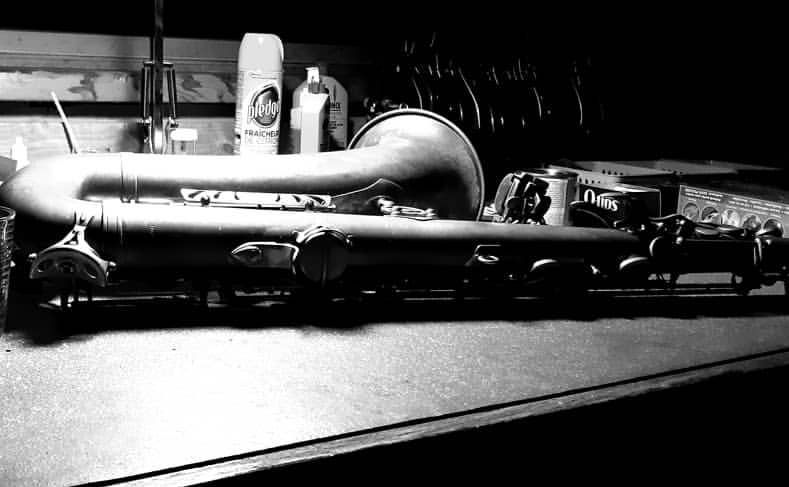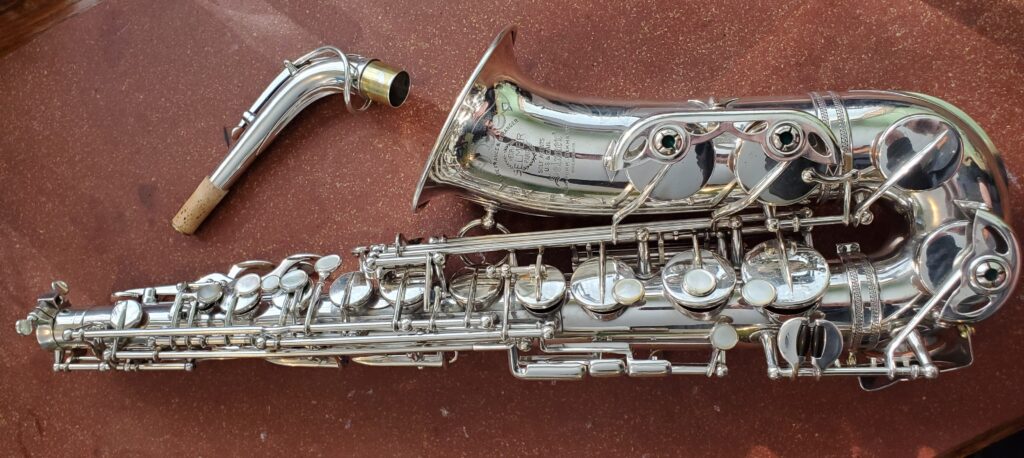One of the things in repair that really attracts me to the art is the act of “striving”. This doesn’t come as a surprise, I’m sure. It is a trait common among artists, musicians, and craftsman. But what exactly is striving, and what does it have to do with woodwind repair and life more broadly? Well, I would argue that it is the seed from which achievement and progress grows, and therefore it has guided human beings for eons. It is how we have made ourselves better. It is how we have become who we are, both as a species and as individuals.
I had an interesting experience just the past week regarding striving. I was in Toronto returning a saxophone to a client. The case had a strap, so I was carrying the horn on my shoulder. As I walked by a window, I caught my reflection and I was instantly transported back to when I was living in the city, trying to make it as a young musician (with much more hair!). I remember what it felt like. I remember living in that way, doing whatever it took to pursue the gig, get better as a musician, practicing as much as I could. I remember the feeling of being emersed in the lifestyle of striving for “The Right Art” as it is called in “Zen in The Art of Archery”. It gave me direction, motivation, and purpose. What is at the core of that is also at the core of all arts, including woodwind repair.

When I am overhauling a saxophone (or any woodwind) there are very small, almost unseen things that make a very big difference in the set up. Things like key fit, tone holes being level and key orientation, on the outside can be almost unnoticeable to the untrained eye, and can even be almost imperceptible to experienced saxophone players. So, why would a technician painstaking spend hours on these minute, nearly imperceptible details of a repair? In a word, “striving”. It is in these microscopic details that your skills as a technician improve. Anyone can replace and set up a pad on a saxophone, but it is in the elements around the pad that make a massive difference in the way the instrument plays and feels. In the documentary “Jiro Dreams of Sushi” The Japanese master sushi chef, Jiro Ono says:
“I do the same thing over and over. Improving bit by bit. There is always a yearning to achieve more. I’ll continue to climb, trying to reach the top, but no one knows where the top is. Even at my age, after decades of work I don’t think I have achieved perfection, But I feel ecstatic all day. I love making sushi. That’s the spirit of Shokunin”
Seeing how far you can take it and pushing yourself to be more accurate is the mechanism by which we improve as technicians, musicians, and people. And if you aren’t actively trying to improve, why are you doing it? What happens if you are not striving? As far as I can tell you are doomed to languish in mediocrity and allow your full potential to fly by. Without it, life becomes dull, mundane, ordinary. We must never submit to the mediocre, allow ourselves to say, “Meh that’s close enough”. It isn’t, and it never will be. It retracts from beauty and excitement of the world when we give up on striving for that pinnacle. It retracts from the beauty in ourselves when we give up on striving.
This striving is also where the fun is in the task, the art, the practice, or whatever method you are pursing. Sometimes to try something and it doesn’t work. Sometimes you try it and it’s close, but not what you expected. Sometimes you try something, and it works of better than you expected! You surprise yourself and that starts the falling in love with the art all over again, and pushes that need and ability to strive even more.
One of the things I remember from when I was an apprentice was when I passed a horn I had set up to Marius (my repair teacher) for inspection. He looked it all over and passed it back to me saying “Okay”. I misunderstood what he meant. It didn’t mean that I was done, or that I had “arrived” as a technician. It meant I was on the path. Striving means you are on the path to better yourself and better your skills, and in some small way, better the world around you. But it is not a path that has an end point. Striving doesn’t lead you to a goal. The goal is the striving itself. Like Sisyphus pushing his rock up the hill, the idea is to always get up, and work on the task, even if you don’t feel like it (sometimes especially if you don’t feel like it). To quote Jocko Willink:
“If I ever pushed the rock up the hill and it stayed there, I’d push it back down myself”.

There is no end point. There is no arrival. The act of striving is more than a goal. It is a way of life. It is a choice. One that is immune from the superficiality of modern instant gratification. It is rewarding in and of itself. It is better than shares of Facebook or likes on Instagram. It is difficult, and perhaps that is how it proves that it is worth while.
